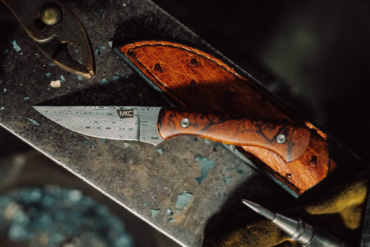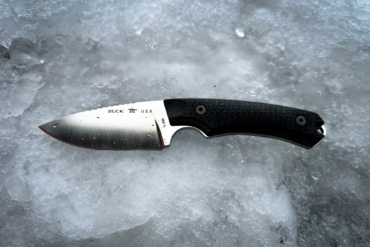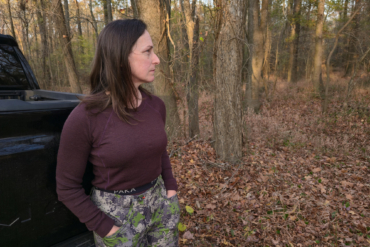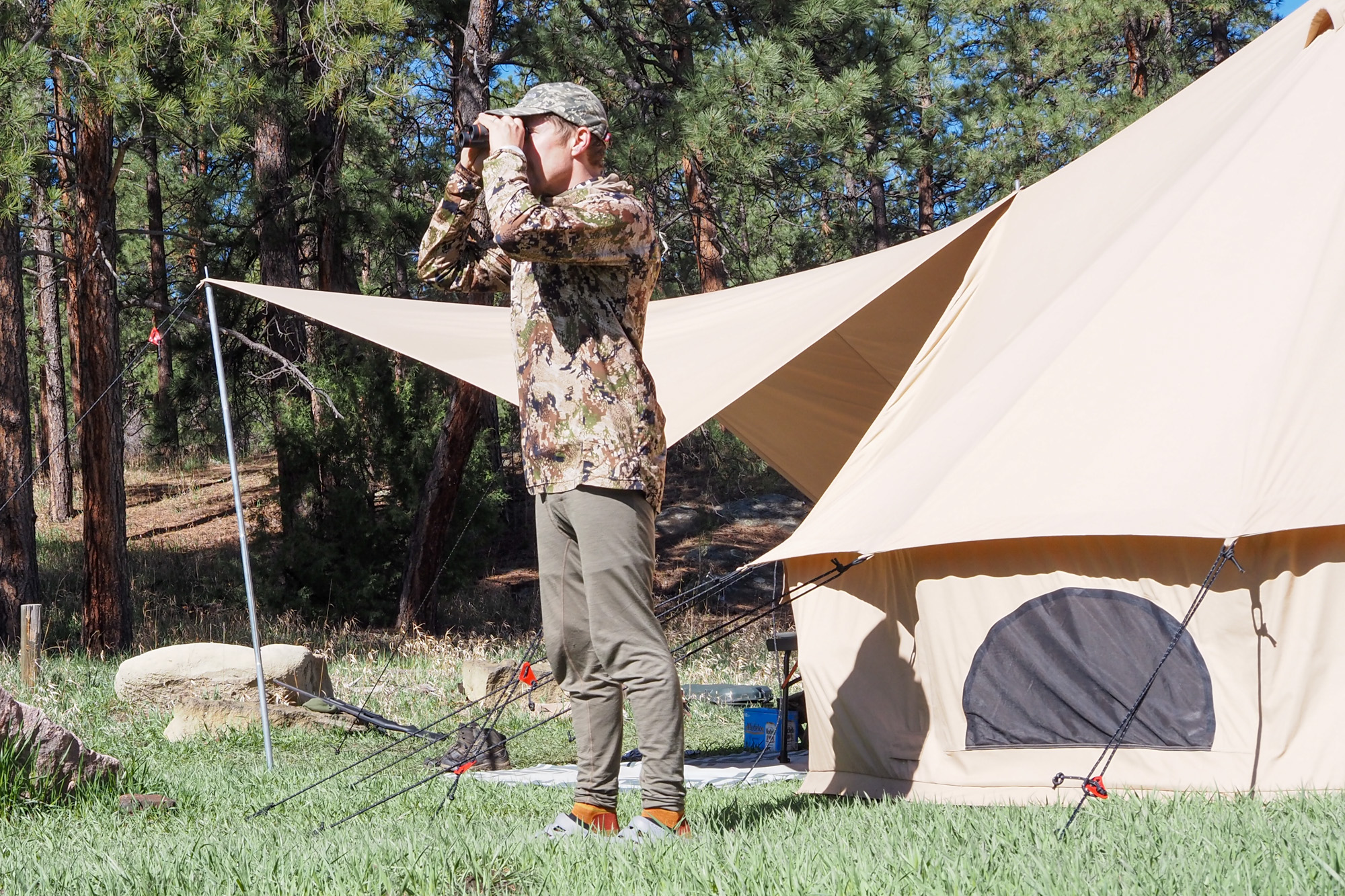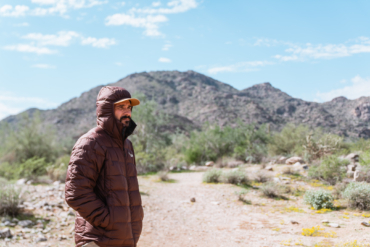As much as deer and elk are similar, there are a few tips and tricks that go a long way when you end up with a sizeable elk on the ground. Follow our guide to successfully field dress an elk and get it in the freezer quickly.
I’m no historian, so I don’t know who coined the phrase “elk hunting stops being fun the minute you pull the trigger.” But there’s truth to it. Sure, there’s something semi-enjoyable about trekking across a mountainside toting a pack full of protein — legs filling with lactic acid and your back screaming in pain — but mostly it’s a grind. You want to finish as quickly as possible.
This past month, my hunting partners and I packed out a trio of bulls over a 6-day hunt. Yep, it sucked. But it was a labor of love.
The good news: If you follow the advice to come, the process won’t be quite as bad.
Invest in a Quality Elk Hunting Pack

I see lots of elk hunters walking around the woods with diminutive daypacks. Not a good idea. Spend the money and purchase a quality pack like those from Mystery Ranch, Stone Glacier, Kifaru, and Badlands. You want a sizeable pack — at least 5,000 cubic inches — with multiple custom-fit adjustments that allow you to properly fit the pack to your body.
In addition, the pack needs to be able to haul meat along with the rest of your gear. When you get a bull down, you don’t want to have to empty your pack, leave gear, and haul meat inside your pack — and you don’t want to walk back to camp to get a frame. Going back to camp without meat in tow wastes energy. Be prepared to kill and start packing.
Use Trekking Poles
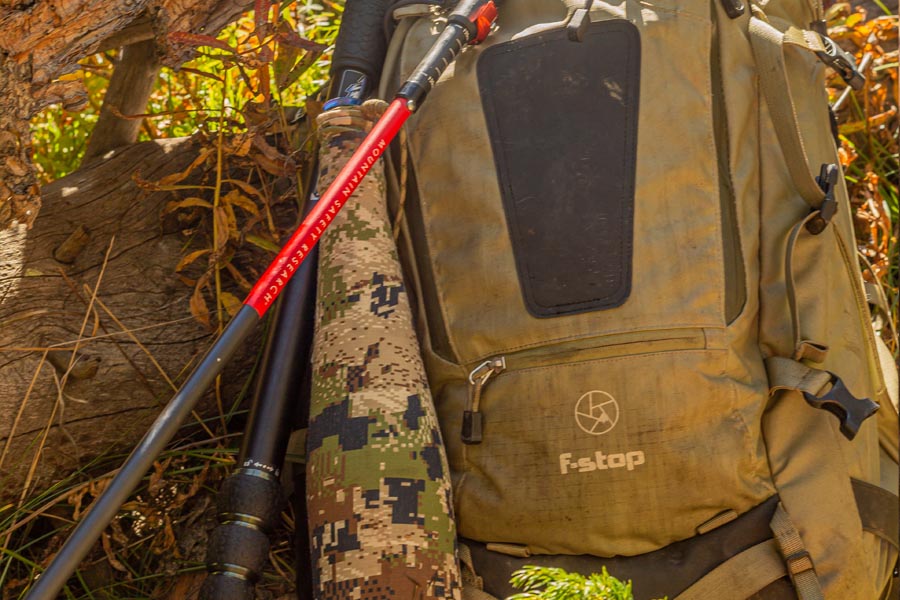
I know this isn’t downhill skiing, but when you have a heavy load on your back and you’re climbing up and down steep, uneven terrain, you’ll be glad you heeded this advice.
I won’t go into the elk woods without a set of quality trekking poles. Poles help you balance and provide walking support. They also come in handy at creek crossings or steep hills. And you can make a brace out of them to steady your shot.
Try them once, and trekking poles will become an elk hunting essential. You’ll thank me later.
Stay Organized
After the photos and high-fives, get out your game bags and lay them out over a log or tree. Next, get out your knives, sharpening stones, and replaceable blades. Put any knives, stones, or blades you’re not using in a clean location where they won’t get buried under hide, hair, and the like.
We prefer to place ours on top of our packs. Develop a system, and the process will go smoothly.
Position the Elk

Get the bull or cow rolled on its side. If you’re working on a steep angle, use parachute cord to tie legs and the like, and use rocks and sticks to brace the bull and keep it from rolling. It really helps to have some friends for this part, as buddies can hold legs as well.
With the elk positioned, our three-man crew goes to work. One guy works on a hind quarter, one on a front quarter, and one goes to caping out the bull. I realize you may not have three people along on your journey, but the goal is simply to divide up the work and keep everyone with a sharp blade a safe distance apart. Divide and conquer.
No Bones, No Guts, Less Weight

There’s no reason to pack unnecessary weight, and there’s no reason to gut the elk. Not gutting the animal saves time and cuts down on mess. You can remove all the meat you want without pulling out the insides.
Familiarize yourself with elk anatomy before your trip (this will help with shot placement as well) and learn how the meat connects to the bone.
Bone is heavy. Leave it behind. Tenderloins can be removed after the backstraps by simply pushing the gut sack down (be careful) and reaching in under the pelvis where the backside of each tenderloin attaches. Use your hand and knife to work from the point of the pelvis back toward the last rib.
Field Dressing
There are myriad videos on elk field dressing online. Watch a bunch and get very familiar with the cuts you need to make before your season. I outline my process below, but learn the gutless method inside and out from several videos before your hunt.
Cut around the front and rear leg just above the joint. Then, run the knife up the back of the leg until you reach the body. Avoid getting hair on the meat by using your knife as a pry bar. Get in under the skin, turn the blade up, and slice up through the skin to avoid getting hair on the meat.
Next, skin out each leg. Let only the skin side rest against the meat. This is an important tip to remember throughout the cleaning process. Either let the meat rest on clean skin or put it directly in game bags. Don’t let it touch hair or the ground.
Laying meat on a tree branch will also work. Bark comes off clean and easy.

Rather than removing quarters, simply remove the skin and cut meat away from the bone. As meat is removed, have a hunting partner open a game bag and place the removed parts inside. This system works very well if everyone helps one another.
It’s also important to keep track of what meat is in what bag. We use a Sharpie. The goal as you piece out the elk is to ensure that each packer is carrying roughly the same amount of meat.
After you complete the first side (hind, front, neck, backstraps, and tenderloins), roll the elk over and repeat the process
Distribute the Weight
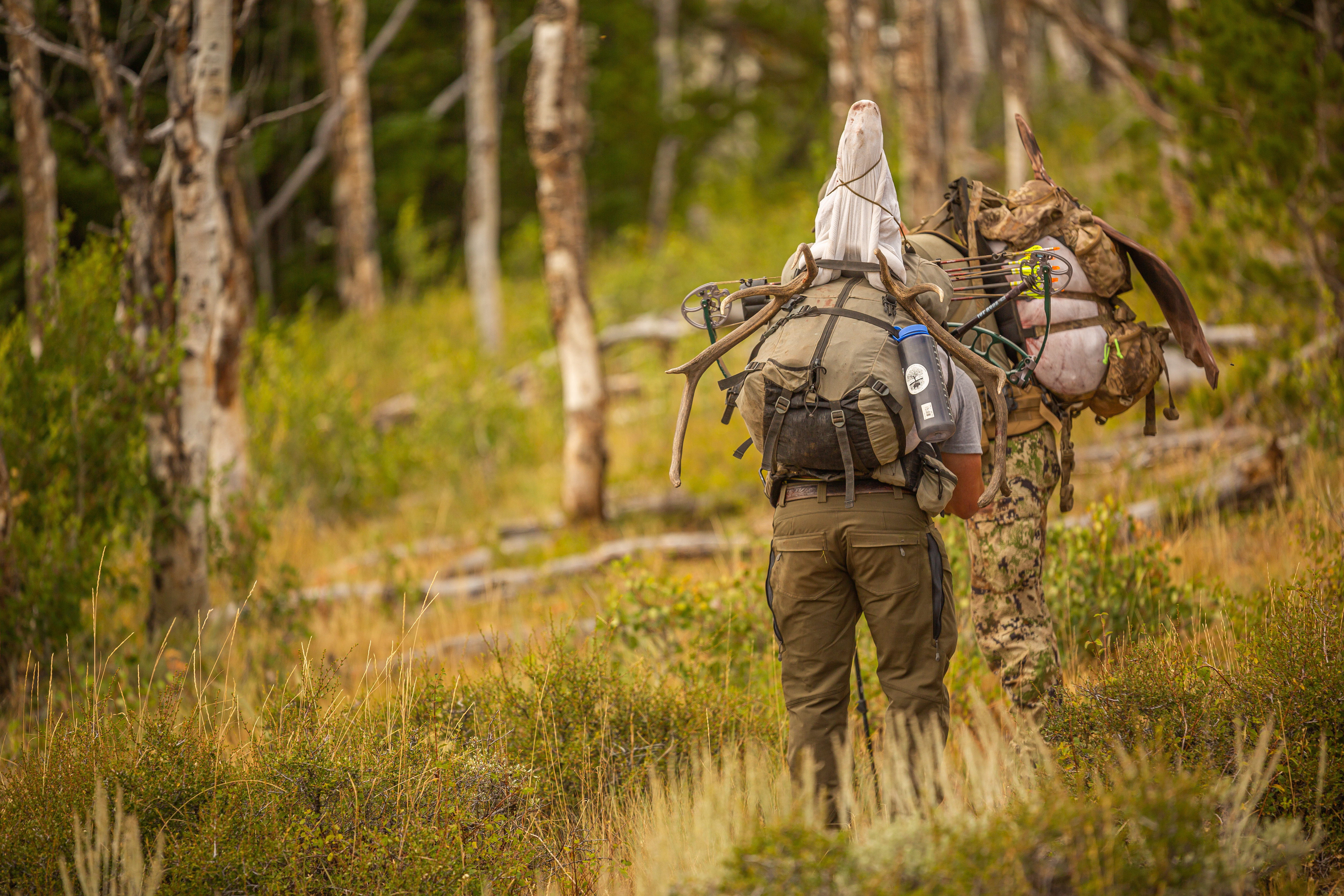
If there are two hunters, one will carry two boned-out hinds, a backstrap, and a tenderloin. The other hunter will carry out two shoulders, a backstrap, a tenderloin, and the cape and horns. When the packs are all loaded up with the above-mentioned, neck meat and the like is equally distributed.
Weight will, of course, fluctuate depending on the size of the elk. Two years ago, my amigo J.C. Navarro killed a 370-inch bull in Wyoming. The horns tipped the scales at over 30 pounds. There were only two hunters, and a single-trip pack-out wasn’t possible. Don’t kill yourself! If you have to make a second trip, that’s just the way it goes.
Know your physical condition and your ability to pack weight before you go. Never attempt a single-trip two-man pack out if you’re not up to it or if you start into the trek and things feel too heavy. This is a recipe for a bad injury.
If you have three hunters in the woods (our typical group), two each carry a hind and a shoulder, and one carries the backstraps, tenderloins, and the horns and cape. Again, neck meat and the like is equally distributed.
Get It Cool

Once you get back to camp, get the meat out of the packs and hang it in trees. This will allow the mountain air to cool the meat. The next day, if possible, run the meat to a local locker. Most area meat processors will allow you to store your boned-out meat for a fee. This allows you to simply drop your meat off and get back on the hunt and help your buddies.



